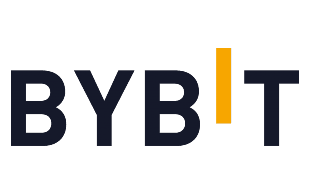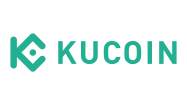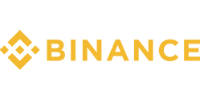Disclaimer: This page is not financial advice or an endorsement of digital assets, providers or services. Digital assets are volatile and risky, and past performance is no guarantee of future results. Potential regulations or policies can affect their availability and services provided. Talk with a financial professional before making a decision. Finder or the author may own cryptocurrency discussed on this page.
US dollar-backed stablecoins USD Coin (USDC) and Tether (USDT) are the two most widely used stablecoins in the world.
We compare USDC versus USDT on key stats like market capitalization, track record and transparency to help you decide on what’s best for your financial goals.
USDC vs. USDT at a glance
| Coin symbol | USDC | USDT |
|---|---|---|
| Market cap | US$60,311,607,900 | US$144,185,956,145 |
| Total supply | 60,311,496,408 | 144,263,991,864 |
| Circulating supply | 60,315,765,373 | 144,263,991,864 |
| Current price | US$0.999924 | US$0.999446 |
| All-time high | US$1.17 | US$1.32 |
| All-time high date | May 08, 2019 | July 24, 2018 |
| Notable team members | Jeremy Allaire, Sean Neville, Brian Armstrong | Brock Pierce, Craig Sellars, Reeve Collins |
| Partnerships | Visa, Ripio | Tron, OMG Network |
| Industry | Stablecoins | Stablecoins |
| Token uses | Stablecoin | Stablecoin |
| Network | Ethereum, Binance Smart Chain, Solana and others | Ethereum, Binance Smart Chain, Solana and others |
What are stablecoins and what do people use them for?
Stablecoins are digital tokens that aim to maintain a 1:1 ratio with the value of currencies like the US dollar.
These tokenized dollars can be collateralized — or backed — in many ways. USDT and USDC, the two largest stablecoins by market capitalization, are backed with actual US dollars or other reserve assets like US Treasury bills or commercial bonds.
High-frequency traders often use stablecoins. If traders want to exit a position in an asset like Bitcoin (BTC) but don’t necessarily want to move their money back into a bank account, which often takes days, they can park their money in stablecoins before making their next trade.
Some hold stablecoins to earn a yield on them. Stablecoin holders can earn yields on their stablecoins through centralized finance (CeFi) platforms like BlockFi or through decentralized finance (DeFi) protocols like SushiSwap.
Stablecoins are also used as a currency outside of the United States. People use US dollar-backed stablecoins to pay for goods and services in countries like Argentina, which have dollarized due to high inflation in their national currencies.
History of USDT and USDC
Originally called Realcoin, Tether (USDT) was brought to market in July 2014. USDT quickly became used as an alternative to US dollars on crypto exchanges.
Other stablecoins were created in 2014 and 2015, but USDT is the only one from that era that has survived. It’s since become the most widely used stablecoin in the world and the #3 ranked crypto by market cap, according to CoinGecko.
It was created by the Goldman Sachs-backed payment company Circle and is managed by the Centre consortium, which is comprised of Circle and major crypto exchange Coinbase.
In under four years, USDC’s market cap has grown to $56 billion. This makes it the second-most widely used stablecoin in the world and the #4 ranked crypto by market cap according to CoinGecko.
USDC vs. USDT fees
The fees associated with using USDC and USDT are not related to the tokens themselves. Instead, the fees for using these tokens have to do with the blockchain on which you use them.
For example, transaction fees on the Ethereum blockchain are typically much higher than the transaction fees on other Layer 1 blockchains like Solana, Binance Smart Chain and Fantom or Layer 2 blockchains like Polygon.
What are Layer 1 and Layer 2 blockchains?
USDC vs. USDT: An issue of trust
USDC has earned a good reputation in the crypto space because its parent company, Circle, is more transparent about the assets that back USDC than Tether is with USDT.
| USDC | USDT | |
|---|---|---|
| Audit frequency | Yearly | N/A |
| Attestation frequency | Monthly | Quarterly |
| Reserve backing | US dollars, Treasury Bills | US dollars, Treasury Bills, corporate bonds |
USDC’s transparency
USDC was created to provide the crypto market with a US dollar-backed stablecoin like USDT but with more transparent backing.
Stablecoin users didn’t trust that USDT was fully collateralized because Tether’s reserves had never been audited. In other words, Tether has been less than forward regarding its finances, and Circle believed that the market needed a stablecoin that investors could trust.
USDC’s reserves have been audited annually by outside accounting firms since the asset’s inception, and the audits from 2020 and 2021 are filed with the SEC.
USDC also undergoes monthly attestations or stress tests in which accounting firms attest to the accuracy of Circle’s financial reports on USDC.
Reports show that USDC is backed only by actual US dollars and US Treasury Bills.
This transparency is important not just for USDC users but also because Circle is preparing to become a publicly-traded company listed on the New York Stock Exchange.
USDT’s lack of transparency
Tether has been notorious for not disclosing the assets it holds to collateralize USDT.
Tether has never been audited nor disclosed the names of the banks in which it keeps its reserves.
Only through an attestation on December 31, 2021, did Tether prove that about 44% of its reserves were in US Treasury Bills. And as of May 2021, only 3% of its reserves were in US dollars.
The rest of its reserves are described as holdings of “unspecified commercial paper,” or short-term debt issued by companies. It’s also added that it doesn’t want to disclose the type of commercial paper it holds because it doesn’t want to give away its “secret sauce.”
New York State sued Tether in April 2019, alleging that it attempted to cover up an $850 million loss.
Bitfinex, a crypto exchange owned by the same company that owns Tether — iFinex — was rumored to have lent Tether money to cover up the losses.
In 2019, the New York Supreme Court found that Tether (USDT) was only 74% backed, and New York State has prohibited Tether from doing business within its borders.
Tether settled the lawsuit by paying a fine of $18.5 million.
Tether still has not been audited and has taken part in only one attestation in the past six months.
Tether has also never issued a full report of what assets compose its reserves, nor in which banks or on which platforms these reserves are kept.
Some fear that Tether poses a systemic risk to crypto markets. For example, professors at the University of Texas found in 2018 that USDT tokens had been minted — without necessarily being properly collateralized — to buy Bitcoin as a means to prop up its price.
Is Tether’s lack of transparency really an issue?
Despite the controversy surrounding USDT, Tether has never failed to process a redemption for an actual US dollar.
If there were a run on Tether, however unlikely, it would mean that not everyone holding USDT tokens would be able to redeem them for actual US dollars.
Bottom line
Whether you’re parking your money in USDT or USDC between trades, lending your stablecoins to generate yield or using them as a medium of exchange, make sure you’ve considered each asset’s track record of transparency and accountability first.
Continue your research on USDC versus USDT by reading our market data overviews on each coin: USD Coin (USDC) and Tether (USDT).
FAQs
Whether products shown are available to you is subject to individual provider sole approval and discretion in accordance with the eligibility criteria and T&Cs on the provider website.
Compare other products
We currently don't have that product, but here are others to consider:
How we picked theseAre you visiting from outside the US?
Ask a question
More guides on Finder
-
What Is Cryptocurrency?
Learn all about cryptocurrency in our beginner’s guide to the basics including how exactly crypto works.
-
List of the biggest crypto hacks
Learn about some major crypto hacks and what you can do to protect yourself.
-
How to buy Chainlink (LINK)
This guide provides step-by-step instructions on how to buy Chainlink, lists some exchanges where you can get it and provides daily price data on (LINK).
-
Shiba Inu (SHIB) Price Prediction 2025, 2030 & 2035
A panel of industry specialists give us their predictions on the price of shiba inu to 2035.
-
Solana (SOL) Price Prediction 2025, 2030 & 2035
A panel of industry specialists give us their predictions on the price of solana to 2035.
-
Dogecoin (DOGE) Price Prediction 2025, 2030 & 2035
A panel of industry specialists give us their predictions on the price of Dogecoin to 2035.
-
Bitcoin (BTC) Price Prediction 2025, 2030 & 2035
A panel of industry specialists give us their predictions on the price of Bitcoin to 2035.
-
Ethereum (ETH) Price Prediction 2025, 2030 & 2035
A panel of industry specialists give us their predictions on the price of Ethereum to 2035.
-
XRP (XRP) Price Prediction 2025, 2030 & 2035
A panel of industry specialists give us their predictions on the price of XRP to 2035.
-
Finder Cryptocurrency Predictions Report
Every 3 months, Finder empanels a range of industry specialists to get a pulse on what the future holds for crypto. This is a summary of those findings.







